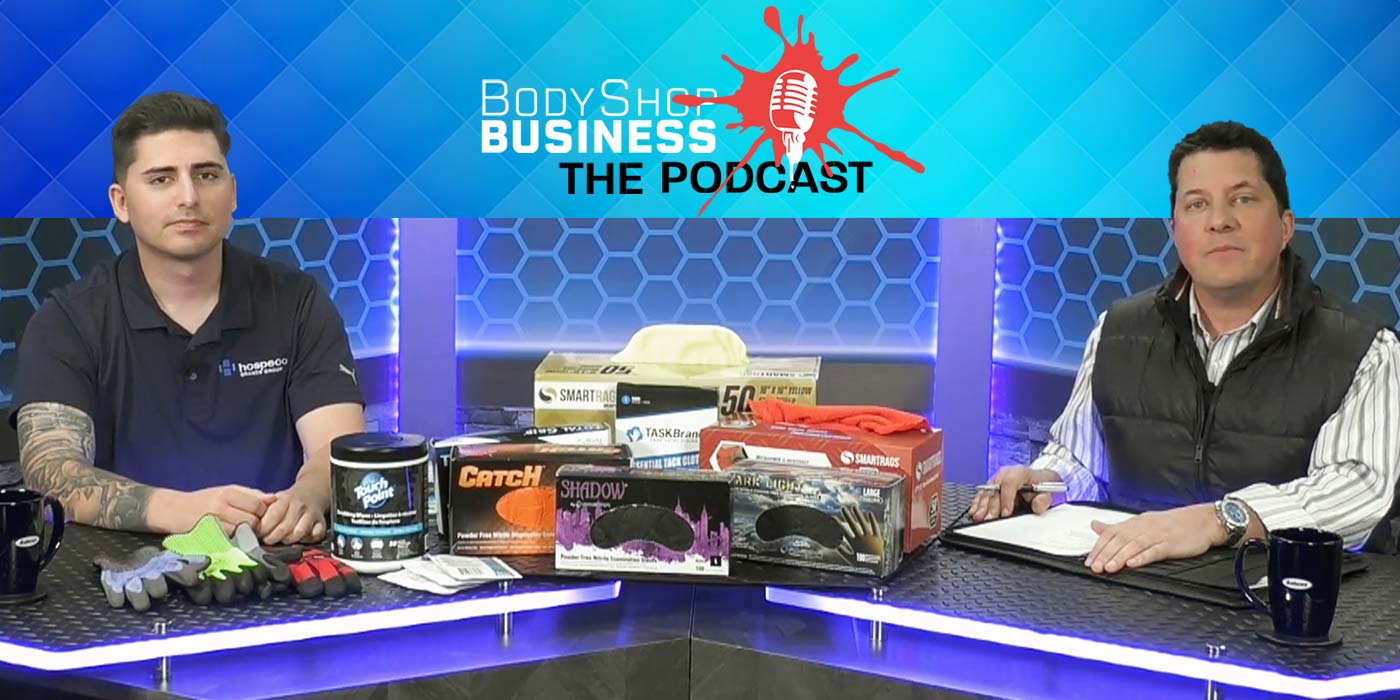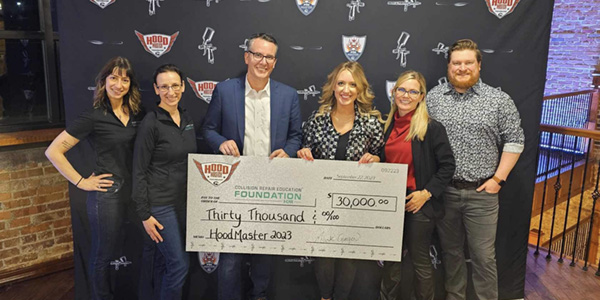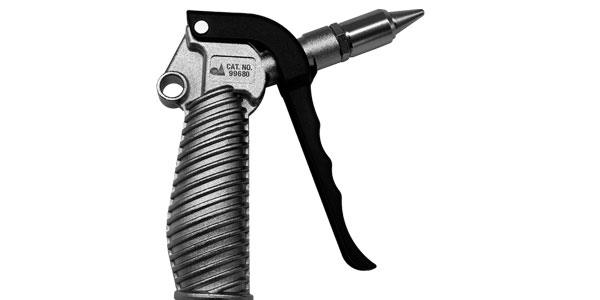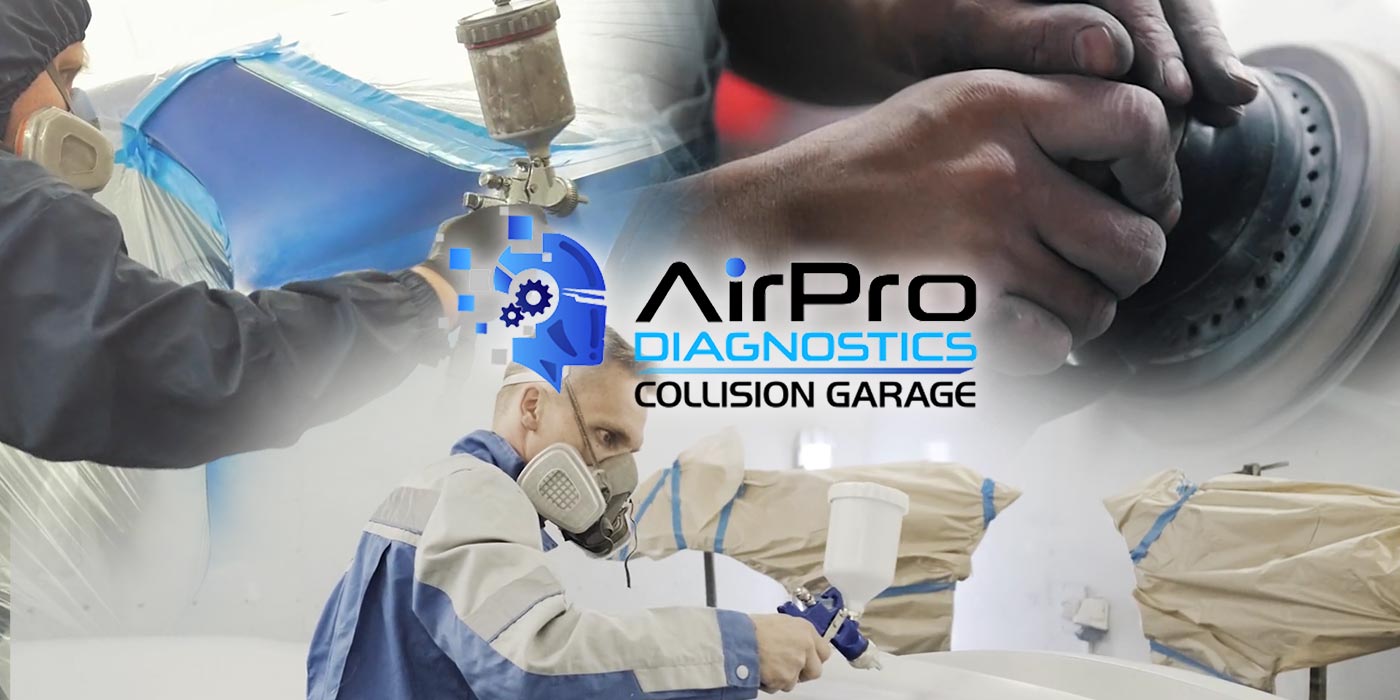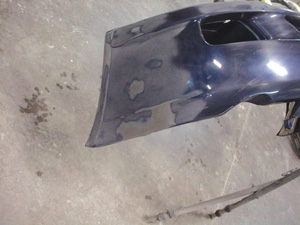
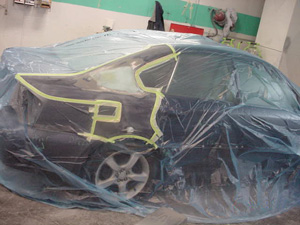
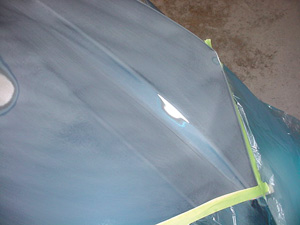
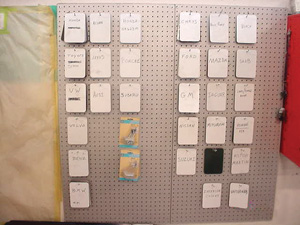
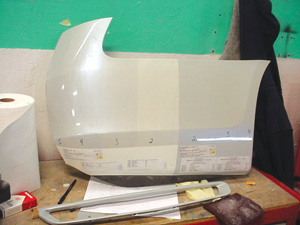
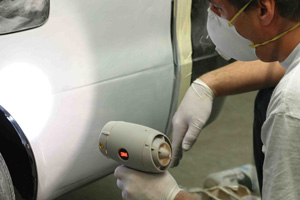 The name of the game at most body shops is production. Simply put, the goal is to get the job done as fast as possible and move on to the next one. This is perfectly acceptable in my mind — provided that the speed of the repair doesn’t come at the expense of getting the job done correctly.
The name of the game at most body shops is production. Simply put, the goal is to get the job done as fast as possible and move on to the next one. This is perfectly acceptable in my mind — provided that the speed of the repair doesn’t come at the expense of getting the job done correctly.
Many shops tempt fate by using every hack shortcut in the book just to get the job done. As a result, those shops earn the reputation they deserve. To explain why they operate the way they do, they come up with the same excuses we’ve all heard in a flimsy attempt to rationalize their actions:
• “The insurance company wouldn’t pay us.”
• “Materials cost too much.”
• “You won’t see that outside.”
• “It’s going to rust out sooner or later eventually.”
How about we all take an oath to not be like these shops/techs? Be a professional and focus on quality. Figure out the right way to do the repair and stick with the plan.
The Illusion of Speed
In the environment of the flat-rate production paint shop, there are many temptations to make the rules up as you go. It all boils down to hard work and efficiency versus being lazy and fast.
I’m going to go through the general sequence of prepping and painting a job. Take notes as you read so that, at the end, you can figure out whether you or others are butchers. If you are, you should take immediate steps to eliminate shady shortcuts using a “quality modification program.” (I made that term up myself, and I’m pretty proud).
When a repair first makes it to the paint shop, everybody wants to start sanding right away and get primer on any filler work as soon as possible. That’s understandable, but what the technician does at this point in the job sets the tone for the rest of the job and the ultimate outcome.
It’s said that cleanliness is next to godliness, and the phrase holds true in the paint shop. The first thing that needs to be done is to clean the panels associated with the job. This task doesn’t take more than five minutes normally, and you’ll avoid grinding muck and guck into the existing finish. Always remember that you do not sand a panel clean…ever! (Make a note of that one, folks; you’ll see that done in shops more often than not.)
Now it’s time to take care of any additional featheredging and scuffing needed. Then you clean off the panel again, fellas. It’s mandatory that any area that gets sanded get cleaned before sanding and after sanding.
Little Things?
Are you going to protect the rest of the car from any primer overspray that will soon be flying around? I certainly hope so. Keep in mind that whenever you’re protecting a customer’s car, more is better. Any extra time spent doing this pales in comparison to the time you’ll spend undoing the damage you allowed to happen.
Note to management: Does your shop’s detailer seem to be a slowpoke? Analyze what’s going on. Is he or she spending extra hours removing overspray from cars, or is the work ethic just not there? Either way, make sure the problem is identified and fixed immediately.
Now that the (properly mixed and applied) primer is cured and ready to go, how do we sand that primer? It’s an age-old debate in the collision repair world whether the primer needs to be block sanded or if the dual-action sander is appropriate. My motto is that I don’t care what you do as long as the job turns out looking right. Can the painter make the body repair bone straight by mowing it down with a DA equipped with a soft pad? If he or she can, that’s great, but my experience has shown that a primed repair needs a little attention first with a hand block.
Note to management: The repair should be undetectable. If a casual glance down the side of the car reveals choppy waves where the repair was, the shop has not done its job well. This common problem is generally a result of not hand blocking primer-surfacer first. Take the steps necessary to make sure this problem goes away.
Prepping blend panels takes up a large portion of each paint job. There are several different ways to successfully accomplish this task. Some people scuff-sand the panels with a scuffing agent, while others prefer dry sanding discs. Still others use a combination of both. I believe every job is a little different and that each technician should choose the best prepping method for the job at hand.
Note to management: Properly prepped blend panels shouldn’t be shiny but devoid of gloss. If you would like to keep your customer base, make sure your paint team knows what they’re doing and why they’re doing it.
Masking cars for paint goes a long way toward producing an undetectable repair. Care should be taken that jambs don’t have hard tape lines in them. A great mask job can also make or break the cleanliness of the finished product. Masking is the painter’s opportunity to seal off the panels being painted from the rest of the car, which are virtual dirt traps no matter how well you washed the car beforehand. Primer overspray may kill your profit, but overspray from a paint job will end up killing you.
In sum, the old cliché of “hurry up and slow down” really is the truth. Most paint shop comebacks can be eliminated through very basic and thorough prep.
Done in a Flash
How fast can a painter get himself or herself in and out of the booth? It depends on the job to a certain degree, but not as much as you would think. When I look at flash times in my paint systems tech book, I see a lot of numbers that are getting ignored. It says: spray sealer, wait 20 minutes. Allow 5 to 10 minutes between coats of base with an average of 3 to 4 coats per job. Wait 20 minutes before clear and then 5 minutes between coats of clear.
By my math, that’s darn close to an hour from start to finish in just flash times. So how do some painters paint a new bumper from start to finish in 15 minutes? My guess is they’re ignoring information that the paint company thought was important enough to print in a technical manual. I’ve seen guys painting with the booth temperature jacked up to 110 degrees so the flash times could be virtually eliminated. This qualifies as the illusion of speed I referred to earlier. If you pound on coats in extreme heat using slower reducers and hardeners, you actually end up applying considerably higher paint thickness to the panels, thereby increasing the required flash time. But if dieback, solvent pop and horrible adhesion is an acceptable outcome, then I suppose it’s all okay in the end.
I put blending and dropcoats in the same category because they both deal substantially with tricky metallics. Great blending and mastery of the dropcoat take patience, practice and experience. Techniques vary so much between paint lines that I hesitate to make any concrete recommendations. I guess the bottom line is that you shouldn’t be able to notice the blend on a paint job, and metallic paint jobs shouldn’t look all blotchy and streaky. If you’re having these problems, it’s possible your painter just doesn’t know how to apply these paints right and could use a little brand specific training.
Know the Rules
I believe the way to get the most work possible done is to do things right from start to finish. This doesn’t mean that a person can’t hustle and turn big hours. It does mean that a person can’t be lazy.
The ultimate key for paint shop production is the absolute knowledge of the paint product and what the manufacturer recommends for prepping. Knowing the rules of your paint line inside and out and following them will keep you from guessing.
Educate yourself on all facets of collision repair. Understand the importance of everything you do, and the reason for doing it. It may be the way you make a paycheck, but it’s your customers’ property you’re working on, and they’re trusting you to make their cars right again. So do the job like a professional.
Final note to management: What can I say? It’s really up to you as to how you want to run your business. If you’ve got scumbags working for you who take liberties with the customers’ cars, then I’m guessing you already know it. There’s no time like the present to change the quality culture of your shop. Start enforcing the quality standards that you would want for your own vehicle. Or you can keep things the way they are and eventually reap what you sow.
Shortcuts That Kill
I believe the most important aspect of painting is matching the color. There are so many variables to getting a nice blendable match, such as different metal flake sizes, hideous side tones, pearls and numerous variants for each code. These challenges, along with the common procedure of not blending on bumper replacements, can give end up giving you a throbbing headache.
Guess what a staggering amount of painters do on a daily basis? They go right into the booth and start spraying, hoping for the best. It’s no surprise, then, that the majority of paint re-dos are the result of terrible color matches. Why are most of those re-dos done right the second time? Because the painter did an incredibly wasteful test panel on that new bumper he or she just painted. When the bumper was put on the car, it was clear to everyone that the color was way off. So the painter adjusted the color or mixed a different variant and checked his or her color match first so he or she wouldn’t look like a moron by painting the bumper wrong yet again.
Of course, the logical question to ask this painter is why he or she didn’t do the job right the first time. Everybody makes mistakes, and re-paints are always going to be needed from time to time, but everybody’s job is to try and minimize costly, preventable mistakes.
Writer Nathan Tarr has been working in and around the collision repair industry for the last 13 years and admits to being “thoroughly addicted to auto body work. It’s my hobby as well as my job.” Sikkens certified and PPG certified, Tarr has been working as a painter for the past five years. He can be reached at [email protected].










